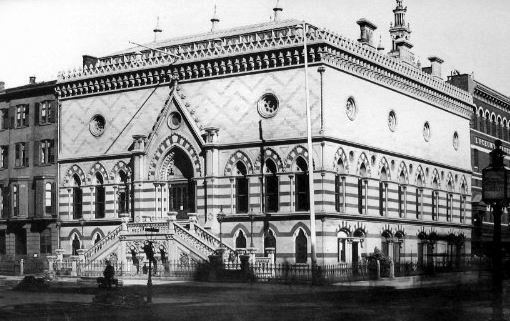Formation 1863 Founded 1825 | Phone +1 212-369-4880 President Bruce Fowle | |
 | ||
Type Honorary organization, museum, and school Purpose To promote the fine arts in America through instruction and exhibition Headquarters Manhattan, New York City Location Fifth Avenue and 89th Street Address 1083 5th Ave, New York, NY 10128, USA Founders Samuel Morse, Asher Brown Durand, Thomas Cole Artwork The Young Orphan, Self‑portrait, Croquet Player, Scene Among the Andes, Claude Monet Similar Pennsylvania Academy of the Fin, Corcoran Gallery of Art, Brooklyn Museum, Smithsonian American Art Muse, Solomon R Guggenh Profiles | ||
National academy museum and school an american collection
The National Academy Museum and School, founded in New York City as the National Academy of Design – known simply as the "National Academy" – is an honorary association of American artists founded in 1825 by Samuel F. B. Morse, Asher B. Durand, Thomas Cole, Martin E. Thompson, and others "to promote the fine arts in America through instruction and exhibition."
Contents
- National academy museum and school an american collection
- History
- Notable instructors
- Notable members
- Leadership
- References
The Academy is a professional honorary organization, a school, and a museum. Although one cannot apply for membership, full members of the National Academy are named from the highest ranks of American artists and architects, and are identified using the post-nominal "NA" (National Academician), while associates are designated with "ANA." The school offers studio instruction, master classes, intensive critiques, various workshops, and lunchtime lectures. Scholarships are available. The museum houses a public collection of over 7,000 works of American art from the 19th, 20th, and 21st centuries.
The Academy has been located at several locations over the years. Notable among them was a building built during 1863-1865, designed by architect P. B. Wight in Venetian Gothic style, which was modeled on the Doge's Palace in Venice. Another locale was at West 109th Street and Amsterdam Avenue in Manhattan. Since 1942 the academy has occupied a mansion that was the former home of sculptor Anna Hyatt Huntington and Archer Milton Huntington at Fifth Avenue and Eighty-ninth Street.
History
The original founders of the National Academy of Design were students of the American Academy of the Fine Arts. However, by 1825 the students of the American Academy felt a lack of support for teaching from the Academy, its board composed of merchants, lawyers, and physicians, and from its unsympathetic president, the famous American Revolutionary War artist Colonel John Trumbull. Samuel F. B. Morse and other students set about forming "the drawing association" to meet several times each week for the study the art of design. Still, the association was viewed as a dependent organization of the American Academy, from which they felt neglected. An attempt was made to reconcile the difference and maintain a single academy by appointing six of the artists from the association as directors of the American Academy. When four of the nominees were not elected, however, the frustrated artists resolved to form a new academy and the National Academy of Design was born.
Notable instructors
Among the teaching staff were numerous artists, including Will Hicok Low, who taught from 1889 to 1892. The famous American poet William Cullen Bryant also gave lectures. Architect Alexander Jackson Davis (A.J. Davis) taught at the Academy. Painter Lemuel Wilmarth was the first full-time instructor Gulian C. Verplanck, a Congressman and a man of letters, gave an address at the school in 1824. and Silas Dustin was a curator.
In 1824, the instructors at the National Academy of the Fine Arts included:
Notable members
Some of the Academy's better-known members include:
Leadership
Maura Reilly serves as interim director, Bruce Fowle as President, and David Kapp as Chairman.
